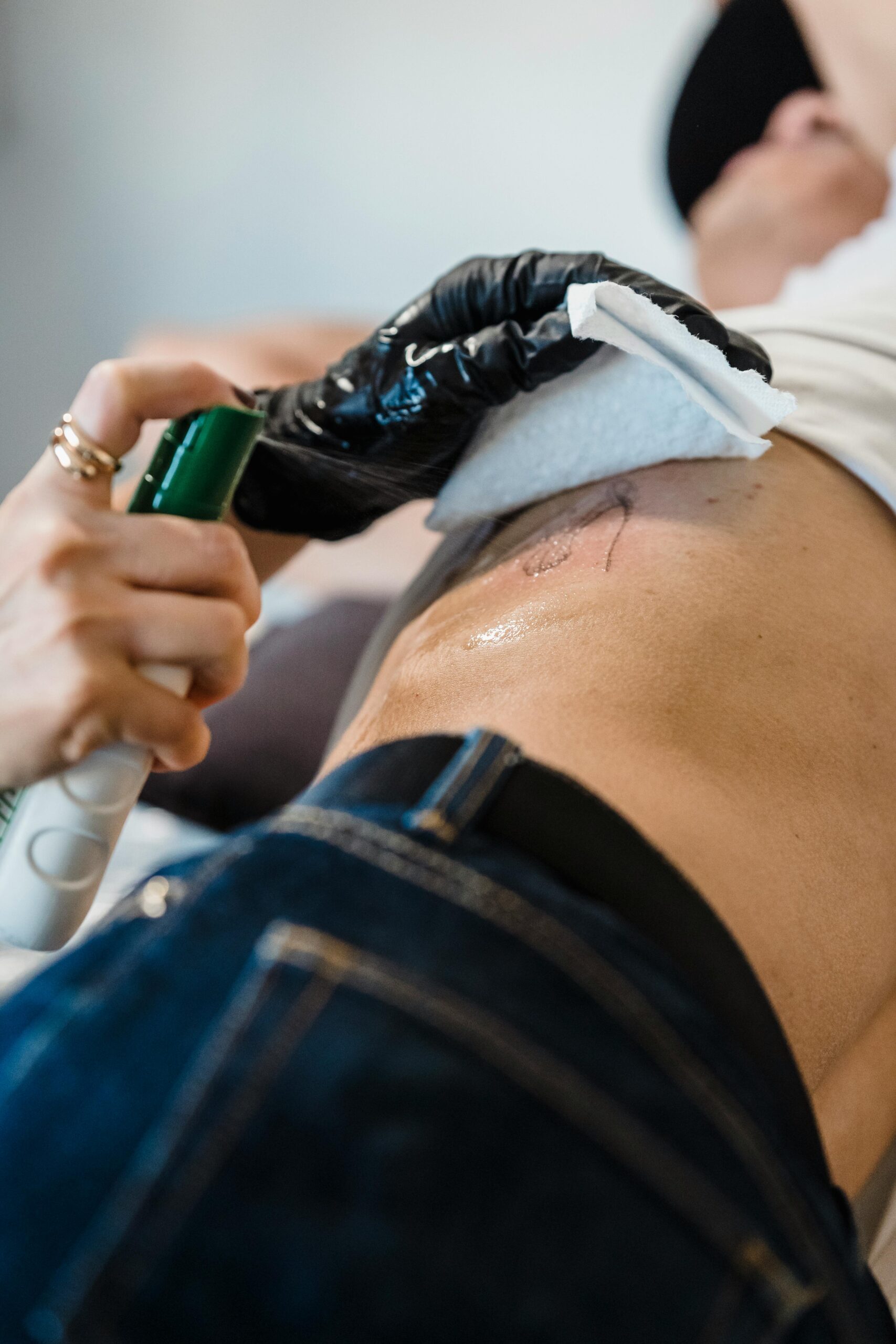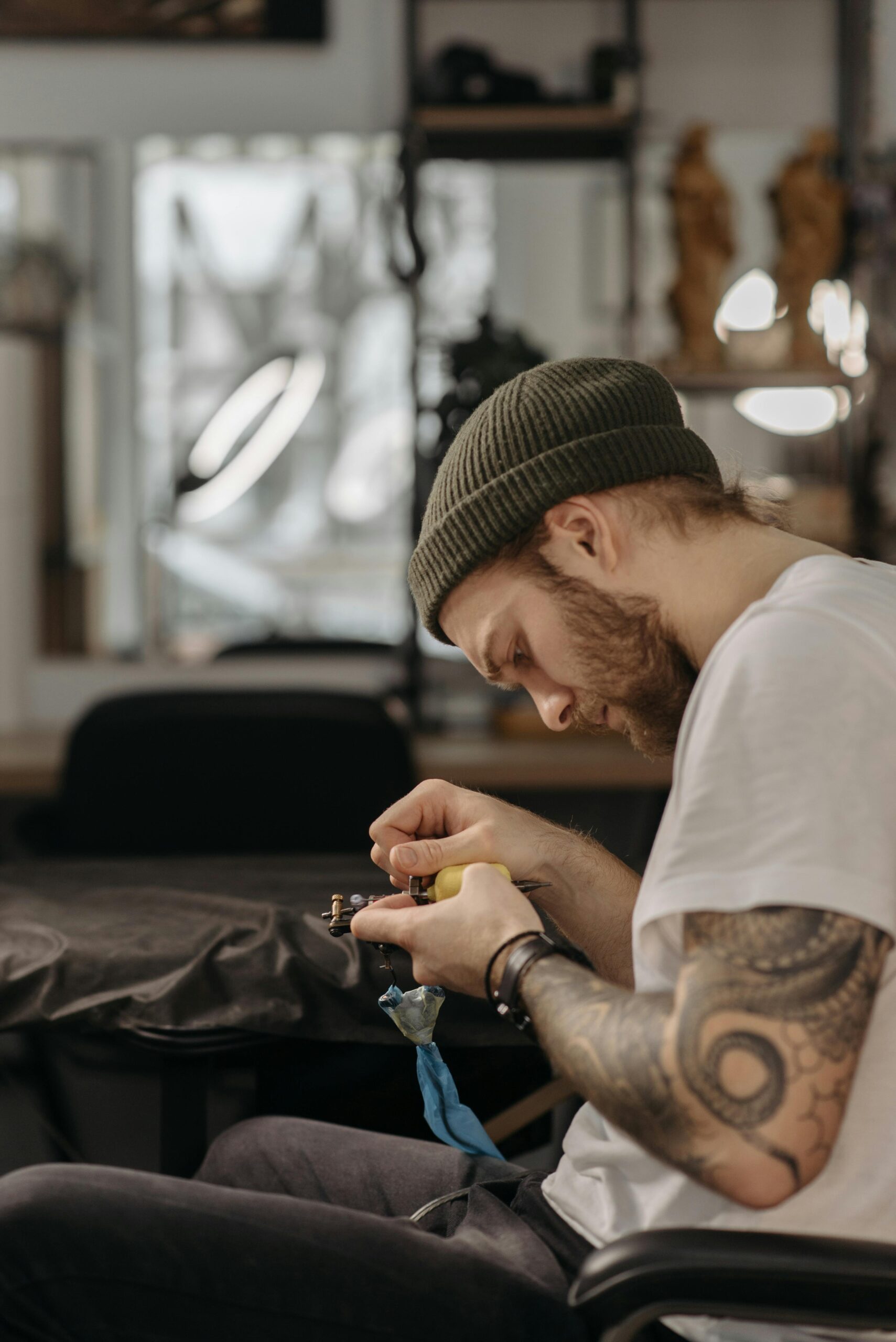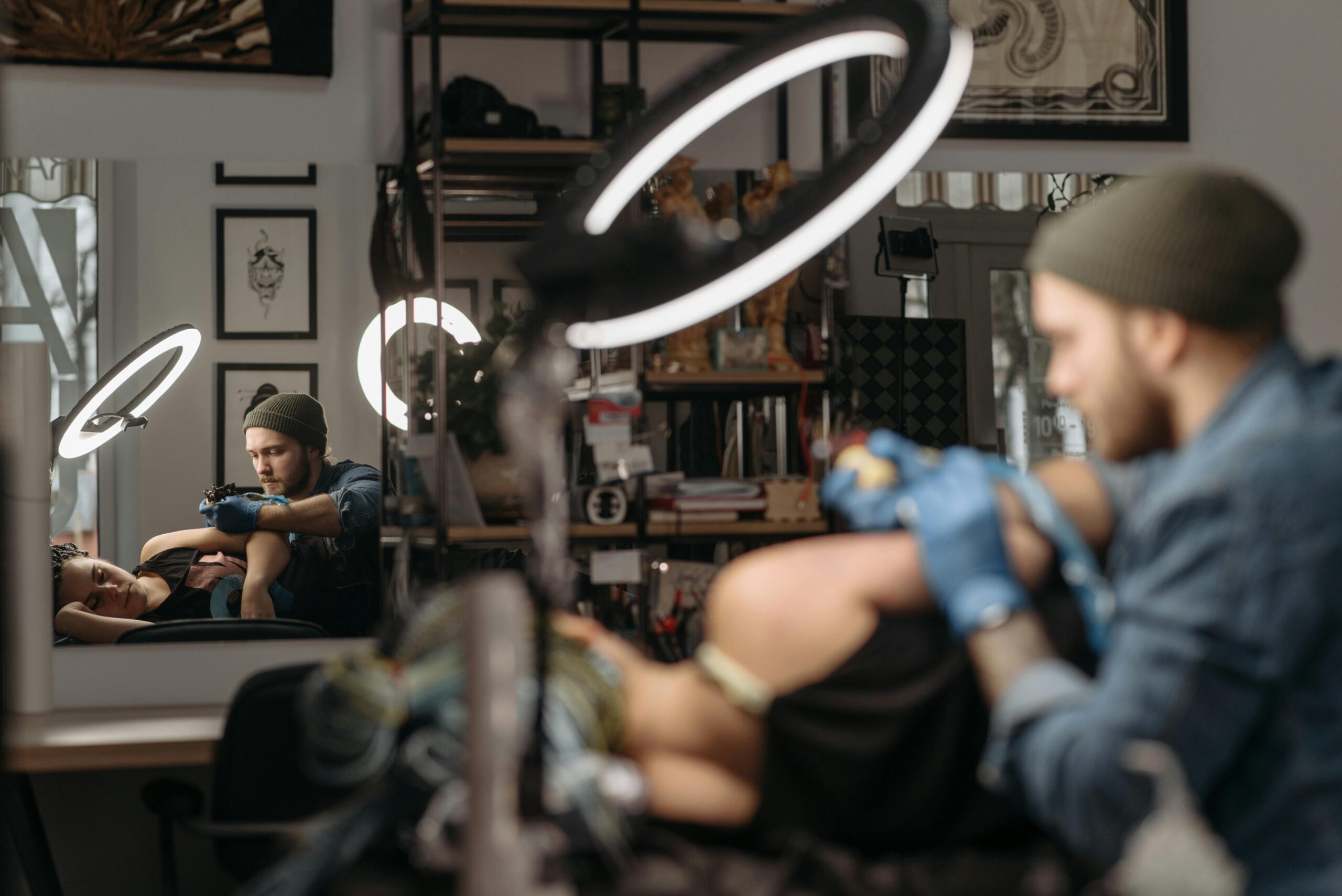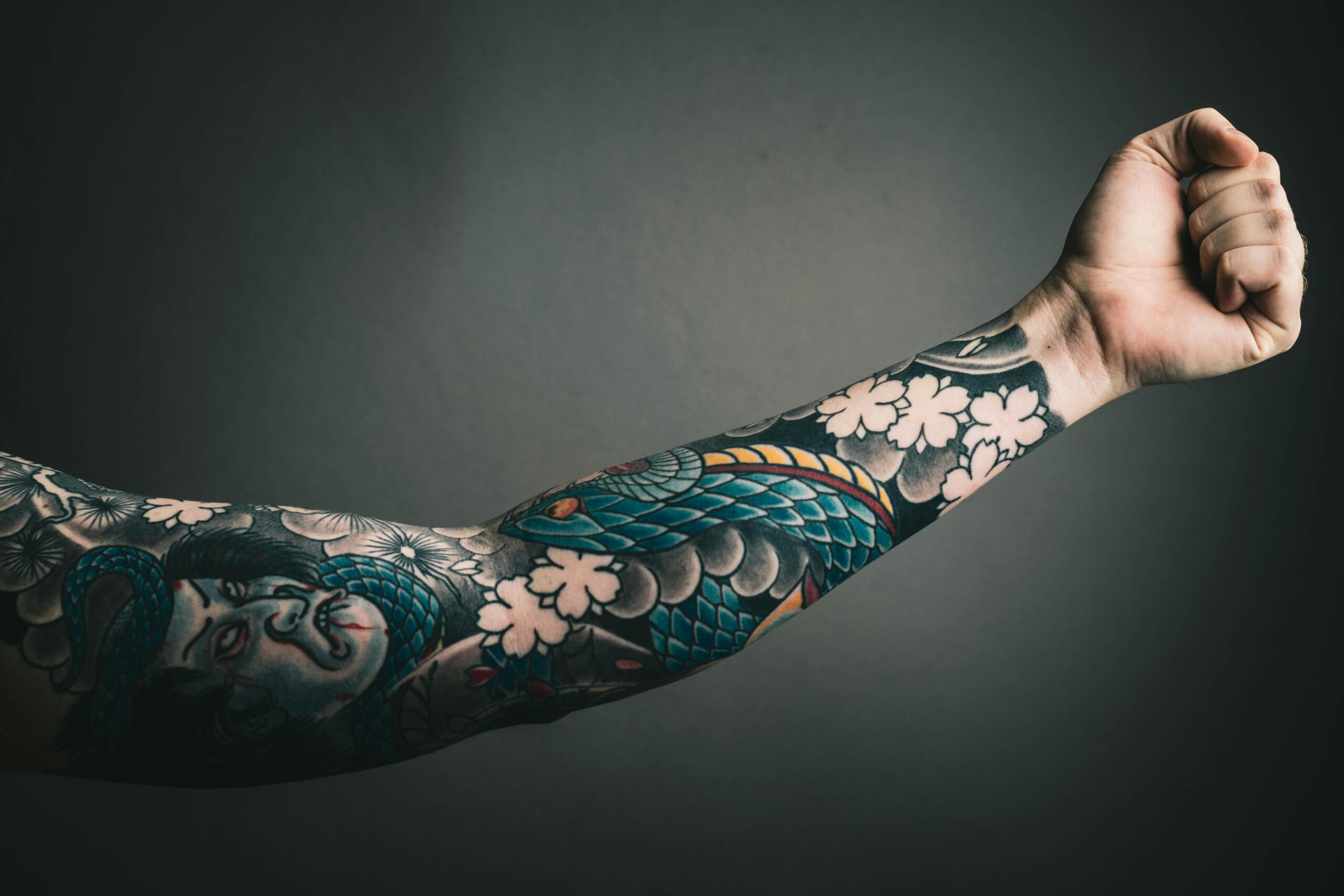Comprehensive, personalised aftercare instructions directly impact healing quality, client satisfaction, and your need to provide free touch-ups. This guide covers creating tailored aftercare protocols for different tattoo types, skin conditions, and client lifestyles—helping you achieve optimal healing results that protect your reputation and bottom line.
Why Generic Aftercare Instructions Fail Your Clients
Standard one-size-fits-all aftercare sheets create problems because tattoos heal differently based on: placement location, size and colour saturation, individual skin characteristics, climate and environmental factors, and client lifestyle and occupation. Generic instructions fail to address these variables, leading to suboptimal healing and increased touch-up rates.
According to dermatological research published by the National Center for Biotechnology Information, tattoo healing outcomes vary significantly based on aftercare protocol adherence, with personalised instructions showing 60% better compliance rates than generic sheets. Better compliance means better healing, fewer complications, and reduced touch-up demands.
Professional aftercare guidance serves multiple business purposes: demonstrates expertise and professionalism, reduces your unpaid touch-up workload, prevents infection or complications that damage reputation, increases client satisfaction and positive reviews, and shows genuine care for client outcomes beyond just getting paid.
Your aftercare protocol becomes part of your professional brand, setting you apart from artists who hand out photocopied generic instructions without personalisation or explanation.
The Canadian Dermatology Association emphasises that proper wound care education significantly improves healing outcomes across all skin types and conditions.
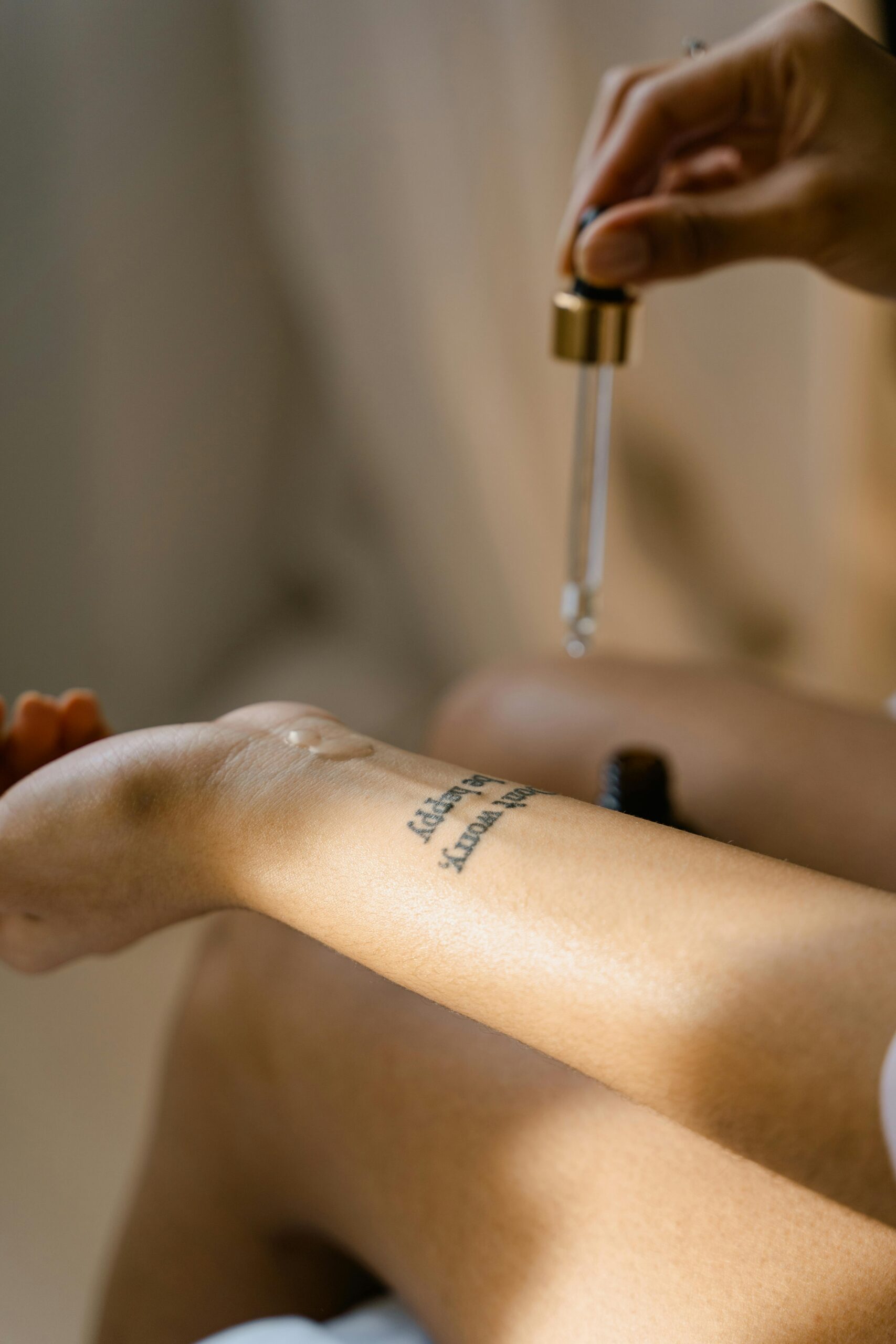
Understanding the Healing Process Timeline
Creating effective aftercare instructions requires understanding tattoo healing stages and what clients experience throughout recovery. This knowledge allows you to set realistic expectations whilst providing stage-appropriate guidance.
Days 1-3: The Inflammatory Phase
Fresh tattoos function as open wounds, triggering inflammatory response characterised by redness, warmth, swelling, and fluid weeping. During this acute phase, the priority involves preventing infection whilst allowing natural healing processes.
Your aftercare instructions for this phase emphasise: keeping the area clean with gentle washing, allowing plasma and excess ink to drain, avoiding tight clothing or friction, and resisting the temptation to over-clean or apply too much product.
Many healing problems originate from excessive intervention during these critical first days—over-washing removes protective plasma, too much ointment suffocates skin and creates breeding grounds for bacteria, and picking or scratching introduces infection risks.
Health Canada’s body art safety guidelines provide baseline standards for tattoo healing care that inform professional aftercare protocols.
Days 4-14: Proliferation and Peeling
The proliferation phase brings visible peeling as new skin cells form beneath the tattoo. This stage causes the most client anxiety, as dramatic flaking can appear alarming. Your instructions must prepare clients for this normal process whilst preventing premature peeling that removes ink.
Address common concerns proactively: peeling is completely normal and necessary, ink in the flakes is superficial excess, resist picking or forcing peeling, maintain moisture without suffocation, and expect temporary dullness before final colour emerges.
Clients who pick at peeling skin cause the majority of preventable healing problems requiring touch-ups. Your instructions must emphasise patience during this uncomfortable phase.
Days 15-30: Maturation and Final Healing
Surface healing completes around day 14, but full dermal healing continues for several weeks. During this maturation phase, the tattoo gains its final appearance as deeper layers fully incorporate pigment and inflammation completely resolves.
Instructions for this phase emphasise: continuing gentle care despite surface healing, protecting from sun exposure, monitoring for unusual changes, and being patient with final colour and clarity development.
Your technical training teaches proper depth and technique, but even perfect application requires client cooperation during healing for optimal results.
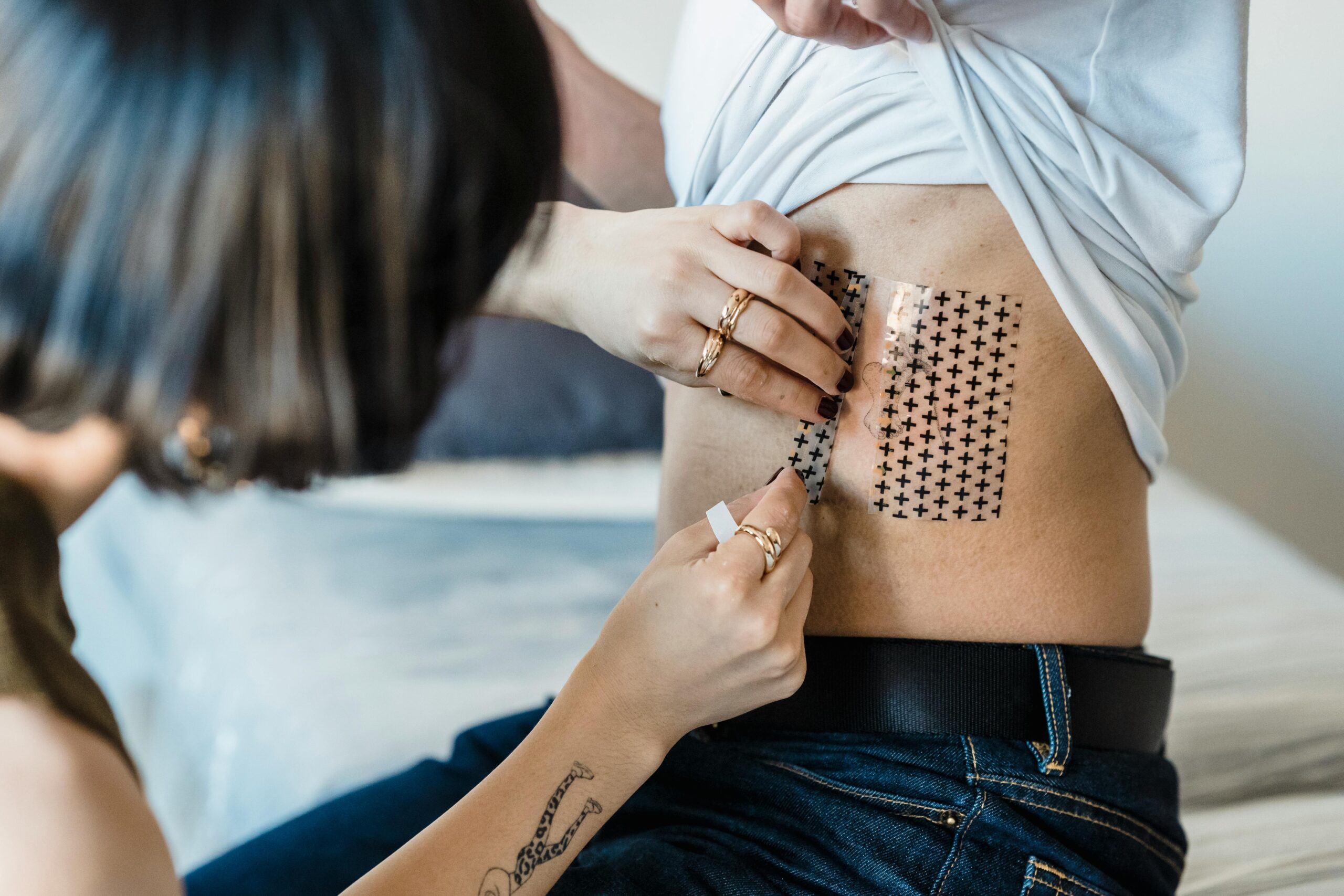
Creating Location-Specific Aftercare Protocols
Different body locations present unique healing challenges requiring tailored guidance. Customising instructions based on tattoo placement dramatically improves healing outcomes.
High-Friction Areas: Hands, Feet, Inner Arms
Tattoos in high-movement or friction areas require extra protection during healing. These locations experience constant flexing, rubbing against clothing, or frequent contact with surfaces that compromise healing.
Specific guidance for these areas includes: wearing loose clothing that won’t rub the tattoo, using protective covering for hand/foot tattoos during sleep, avoiding activities that excessively flex or strain the area, and applying moisturiser more frequently due to faster absorption.
Hand and foot tattoos particularly benefit from protective gloves or socks during sleep’s first week, preventing unconscious scratching and reducing bedding contact that transfers bacteria.
Areas with High Moisture Exposure
Locations prone to sweating (underarms, chest, back) or water exposure (hands, forearms for people washing dishes frequently) need modified aftercare emphasising quick drying and breathability.
Customise instructions to include: pat drying immediately after any moisture exposure, avoiding excessive sweating during healing, using moisture-wicking clothing layers, and potentially lighter moisturising application to prevent occlusion.
For clients whose occupations involve frequent handwashing (healthcare workers, food service, childcare), provide realistic guidance about protective strategies without expecting impossible lifestyle changes.
Face and Neck Tattoos
Facial tattoos present unique challenges due to: constant exposure to elements, difficult bandaging or protection, proximity to mouth bacteria, and visibility requiring cosmetic considerations.
Specialised face/neck aftercare addresses: keeping the area meticulously clean given environmental exposure, avoiding makeup during healing, managing sun exposure given location, and being extra cautious about product ingredients given facial skin sensitivity.
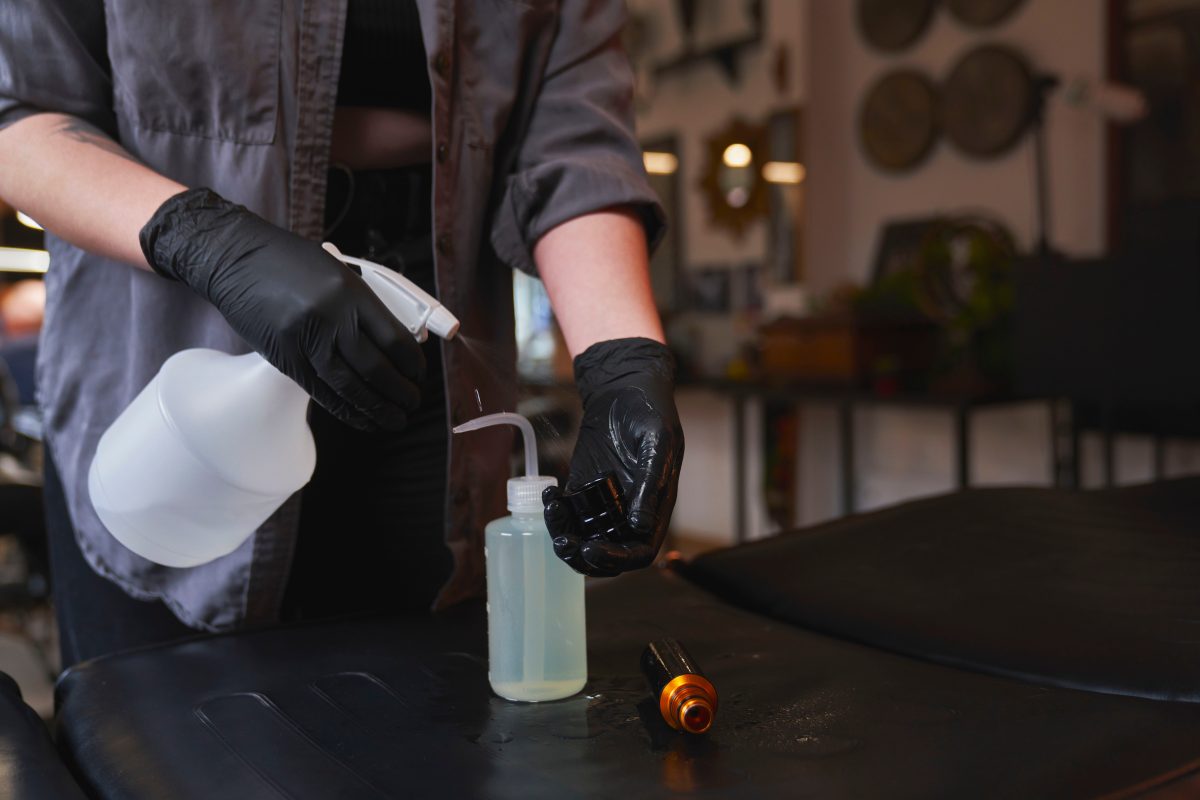
Customising for Tattoo Characteristics
Beyond location, the tattoo’s specific characteristics influence optimal aftercare approaches.
Large-Scale and Heavily Saturated Work
Extensive coverage or heavy colour saturation creates more significant trauma requiring adjusted aftercare. Large pieces produce more plasma, experience more swelling, and take longer to complete surface healing.
Modified instructions include: potentially using adhesive bandaging for extended initial protection, more frequent gentle cleansing during high-plasma days, divided aftercare attention for sleeve or back pieces done in multiple sessions, and patience with extended healing timelines.
According to professional guidelines from the Alliance of Professional Tattooists, large-scale work benefits from professional aftercare product recommendations over improvised household alternatives given increased healing demands.
Fine Line and Delicate Work
Delicate tattoos require gentler aftercare approaches protecting fine detail whilst avoiding overcare that causes blow-outs or blurring during healing.
Emphasise: minimal product application to avoid ink migration, very gentle cleaning without aggressive rubbing, protection from mechanical trauma, and patience with final appearance as fine lines settle.
Fine line pieces particularly benefit from avoiding heavy ointments during early healing—their lighter saturation requires less moisture than bold traditional work.
Your fine line specialisation demands understanding how healing affects delicate work differently than heavy saturation pieces.
Personalising for Client Factors
Individual client characteristics significantly impact healing, requiring personalised guidance that generic instructions cannot address.
Skin Type Considerations
Oily skin, dry skin, sensitive skin, and mature skin all heal differently and benefit from customised product recommendations and application frequencies.
Oily Skin: Recommend lighter, gel-based aftercare products, more frequent but thinner application, and vigilance about cleaning given increased bacterial presence. Oily-skinned clients often need to wash more frequently than standard instructions suggest.
Dry Skin: Advise more frequent moisturising application, potentially richer aftercare products, and extra attention to preventing cracking or excessive tightness.
Sensitive Skin: Specify fragrance-free, hypoallergenic products, perform patch testing if concerned, recommend simpler products with fewer ingredients, and monitor closely for allergic reactions.
Lifestyle and Occupation Factors
Client daily life dramatically impacts healing success. Gather information during consultation about work environment, exercise habits, living situation, and typical daily activities to provide realistic guidance.
Athletes and Active Clients: Address exercise limitations, sweat management strategies, showering after workouts, and realistic timeframes for returning to specific activities.
Outdoor Workers or Sun Exposure: Emphasise sun protection despite challenges, covering strategies for work compliance, and recognising when activities genuinely risk healing outcomes.
Parents and Caregivers: Acknowledge challenges of childcare during healing, suggest protective clothing strategies, and provide realistic hygiene guidance given frequent handwashing.
Healthcare Workers: Recognise unavoidable frequent handwashing and chemical exposure, recommend barrier strategies, and potentially suggest modified healing products given constant moisture exposure.
Demonstrating understanding of client realities whilst providing practical adaptations creates better compliance than unrealistic instructions clients cannot follow.
Public Health Agency of Canada infection prevention guidelines inform proper hygiene protocols whilst accommodating various lifestyle factors.
Product Recommendations: Specific vs. General Guidance
Deciding whether to recommend specific aftercare products or provide general guidance impacts both healing outcomes and your business model.
Branded Product Recommendations
Many artists recommend or sell specific aftercare products, ensuring consistency and quality whilst generating additional revenue. Popular professional products include Hustle Butter, After Inked, Redemption, and various dermatologically-tested tattoo balms.
Advantages include: knowing exact formulation clients use, ensuring appropriate product characteristics, generating retail income, and positioning you as comprehensive care provider.
Disadvantages involve: client perception of upselling, accessibility issues if products aren’t locally available, and potential client resistance to purchasing specialised products.
General Guidance Approach
Providing general product characteristics allows clients to source appropriate products locally whilst maintaining healing quality. Specify: fragrance-free, unscented products, ingredient lists to avoid (petroleum, lanolin, alcohol), recommended brands or product types, and how to evaluate product suitability.
This approach offers flexibility and reduces perceived commercialisation whilst still guiding appropriate product selection.
Your comprehensive training should include understanding various aftercare product categories and their appropriate applications.
Addressing Common Aftercare Questions Proactively
Comprehensive instructions anticipate and answer common questions before clients panic and make poor decisions or bother you with basic concerns.
Swimming and Water Exposure
Clearly specify timeframes for avoiding submersion: no swimming pools, baths, hot tubs, or ocean water for minimum 2-3 weeks. Distinguish between showering (acceptable after 24 hours with precautions) and submersion (prohibited during healing).
Explain reasoning—chlorine, salt, bacteria in water, and prolonged moisture exposure all compromise healing. Clients who understand why restrictions exist comply more reliably than those given unexplained rules.
Sun Exposure and Tanning
Address sun protection explicitly, as UV damage dramatically fades tattoos and damages healing skin. Specify: avoiding direct sun during healing, using physical covering rather than sunscreen on fresh tattoos, and committing to lifetime sunscreen use for colour preservation.
Many clients don’t realise sun damage is the primary cause of tattoo fading—education during aftercare discussion sets proper expectations and protects your work’s longevity.
Signs of Infection or Complications
Include clear guidance on normal healing versus concerning symptoms requiring medical attention. Normal healing involves temporary redness, mild swelling, plasma/ink weeping, and later peeling. Concerning symptoms include increasing redness after day 3, excessive swelling, pus or yellow discharge, fever, red streaking from tattoo, and severe or increasing pain.
Instruct clients to contact you about concerns before seeking emergency care for minor issues, but emphasise not delaying medical attention for genuine infection symptoms. According to Health Canada guidance, early infection identification prevents serious complications.

Digital Delivery and Follow-Up Systems
Modern aftercare instruction delivery goes beyond printed handouts to include digital resources allowing ongoing reference and follow-up communication.
Multi-Format Instruction Delivery
Provide aftercare information through multiple channels: printed take-home sheet for immediate reference, digital copy via email or text for easy access, photos of instructions on client’s phone, and potentially video demonstration of cleaning and moisturising technique.
Multiple formats accommodate different learning styles and ensure clients can access instructions when needed without relying on keeping track of paper sheets.
Automated Follow-Up Sequences
Implement automated follow-up communication checking healing progress and providing stage-specific guidance:
Day 3 Check-In: Brief text or email confirming normal healing appearance, reminding about upcoming peeling phase, and inviting questions about any concerns.
Day 7 Check-In: Address peeling phase anxiety, reinforce no-picking guidance, confirm moisturising routine, and request healing progress photos.
Day 14 Final Check: Confirm surface healing completion, discuss final appearance expectations, address any remaining concerns, and remind about sun protection moving forward.
Automated systems show professionalism whilst reducing manual follow-up burden. Many artists use Customer.io, Mailchimp, or dedicated tattoo booking software with built-in aftercare messaging.
Statistics Canada data on digital adoption shows increasing Canadian comfort with digital communication, supporting multi-channel aftercare delivery.
Documentation and Liability Protection
Comprehensive aftercare documentation protects both client health and your legal position should complications arise.
Written Acknowledgment Requirements
Have clients sign aftercare instruction receipt, acknowledging they’ve received, understood, and agree to follow your guidance. This documentation proves you provided appropriate care information if disputes arise.
Include language confirming: client received verbal and written instructions, client understands healing timeline and requirements, client agrees to contact you about concerns, and client acknowledges their responsibility for following aftercare protocol.
Maintain these signed acknowledgments with client records for minimum seven years, meeting regulatory requirements whilst protecting against liability claims.
Privacy legislation compliance requires secure storage and appropriate data handling for all client documentation.
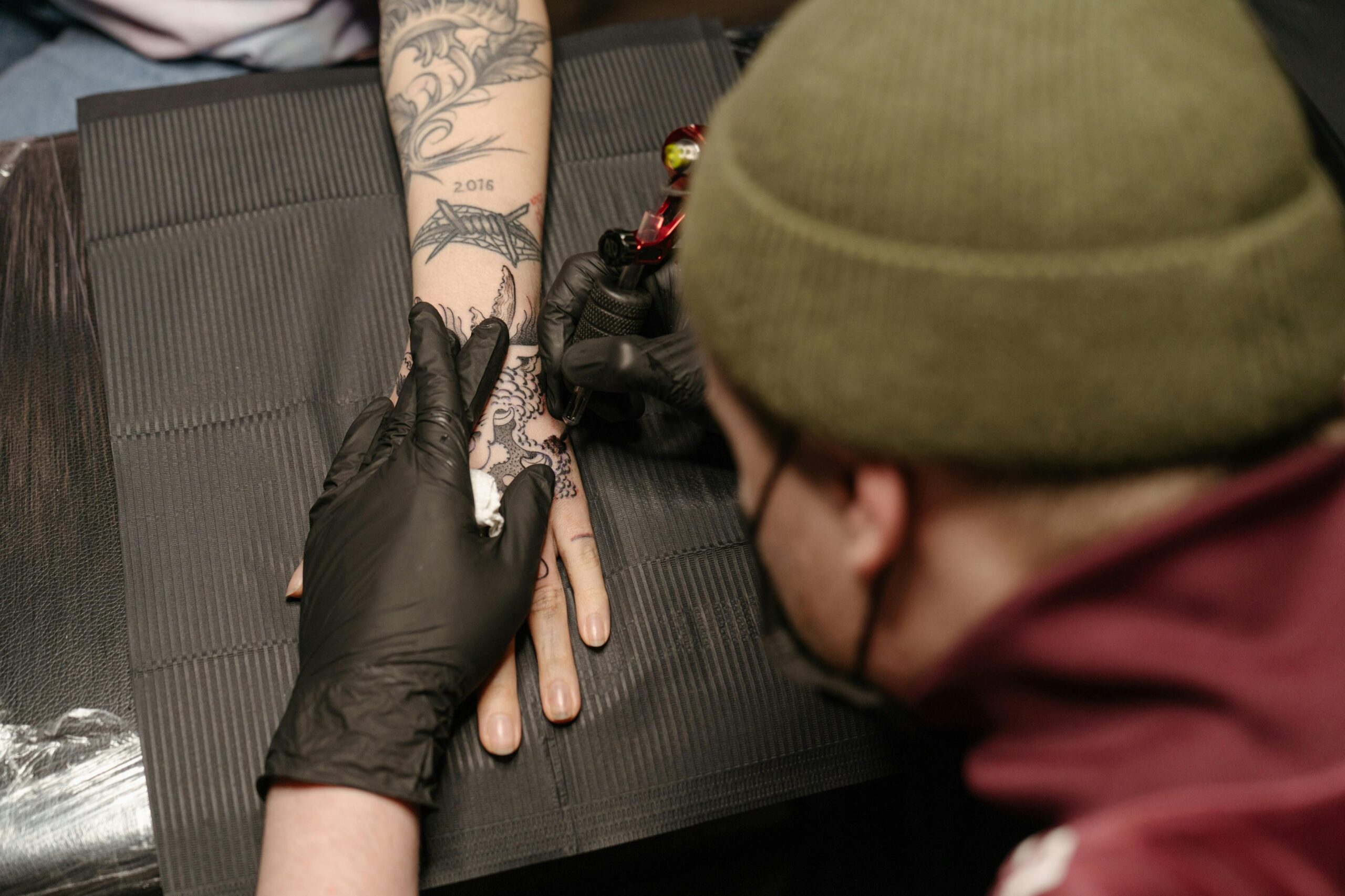
Touch-Up Policy Integration
Your aftercare instructions should clearly explain your touch-up policy, including: what qualifies as normal healing versus requiring touch-up, timeframe for assessing final healing (typically 6-8 weeks), touch-up fee structure or free touch-up conditions, and how to schedule touch-up appointments.
Clear touch-up policies prevent misunderstandings about whether issues resulted from healing complications versus your technique. Clients who follow aftercare diligently are more likely to accept responsibility for healing problems than those given vague guidance.
Many artists provide free touch-ups for clients who followed instructions but charge for touch-ups addressing healing problems from aftercare non-compliance. Documented aftercare instruction and follow-up communication support this policy.
Your portfolio quality depends partly on client aftercare compliance—proper instruction directly impacts your displayed results.
Professional Training Includes Client Care
Technical tattooing capability means little if clients fail to heal properly, damaging your reputation regardless of initial execution quality. Professional training must include client communication and aftercare education alongside artistic development.
At Omnia Tattoo Academy, our comprehensive online tattoo courses include dedicated modules on aftercare protocol development, client communication strategies, and documentation systems that protect both healing outcomes and your business interests. You’ll learn how to customise instructions for various scenarios, communicate effectively with diverse clients, and implement follow-up systems that improve healing success rates.
Our experienced tutors provide personalised guidance on developing your aftercare protocols and addressing specific client scenarios you’ll encounter. With six-day weekly support, you’ll receive answers to specific questions as you build your client care systems.
Protect Your Work Through Professional Aftercare
Ready to develop comprehensive client care capabilities that protect your artistic work and business reputation? Our comprehensive tattoo courses provide technical skills, client communication training, and business systems development—everything you need for sustainable tattoo career success.
Join Canadian artists who’ve built thriving practices through Omnia’s proven training methodology. With flexible payment plans starting at $30 per week, professional equipment included, and comprehensive training in every aspect of professional practice, you’ll establish the foundations for long-term success.
Explore our online tattoo course options today and start building the professional standards that set you apart.
The Learning Online Group, parent company of Omnia Tattoo Academy has supported over 15,000 students globally since 2019, providing job-ready skills as a modern alternative to class based education. Explore our specialized brands: Canadian Photography School, Canadian Beauty School, My Learning Online among others. With dedicated 1:1 Tutoring, Flexible Payment Plans and 24/7 Learning Access, Learning Online Group continues to lead the way in Vocational Education in Canada.
